
7 Best Customer Segmentation Tools in 2024

par
Wiktoria Slowikowska
12 sept. 2024
Identifiez et convertissez vos utilisateurs les plus importants
Créer un compte
Are you struggling to make sense of your customer data? You're not alone. We've done extensive research on customer segmentation tools to help you navigate this challenge.
Understanding your customers is crucial for business success. With numerous tools available, choosing the right one can be overwhelming. That's where we come in. We've carefully selected and analyzed the 7 best customer segmentation tools on the market.
We're excited to share our findings with you. This guide offers an in-depth look at customer segmentation tools, covering features, advantages, disadvantages, and pricing options.
Whether you're running a small startup or managing a growing enterprise, we've identified options to suit your specific needs.
Before we delve into the details, let's address a couple of important questions:
How can customer segmentation tools drive business growth?
Personalized Marketing: By dividing your customer base into distinct groups, you can tailor your marketing messages to resonate with each segment's specific needs and preferences
Improved Product Development: Understanding different customer segments helps in developing products or features that cater to specific user needs
Enhanced Customer Experience: Segmentation allows for customized user experiences, leading to higher satisfaction and loyalty
Efficient Resource Allocation: By identifying your most valuable customer segments, you can allocate resources more effectively to maximize return on investment
Targeted Retention Strategies: Segmentation helps in identifying at-risk customers, allowing for targeted retention efforts
What features should I look for in customer segmentation tools?
Data Collection and Integration: The ability to gather data from multiple sources and integrate it seamlessly
Advanced Analytics: Look for tools that offer predictive analytics, machine learning capabilities, and real-time data processing
Flexible Segmentation Criteria: The tool should allow for segmentation based on various factors like demographics, behavior, psychographics, and more
Visualization and Reporting: Clear, intuitive dashboards and customizable reports are crucial for understanding and acting on insights
Integration Capabilities: The tool should integrate well with your existing marketing and CRM systems
User-Friendly Interface: Even team members without technical expertise should be able to create and analyze segments
Scalability: As your business grows, your segmentation tool should be able to handle increased data volume and complexity
Now that we've covered the basics, let's dive into our comparison of the 7 best customer segmentation tools available today.
1. Hyperaktiv
Hyperaktiv is a fast, easy-to-use platform that combines customer segmentation with growth copilot capabilities. It's designed for businesses seeking quick insights and immediate actions to drive user engagement and conversion. This tool is particularly suited for small to medium SaaS companies looking for a straightforward, actionable approach to user analytics and growth strategies.
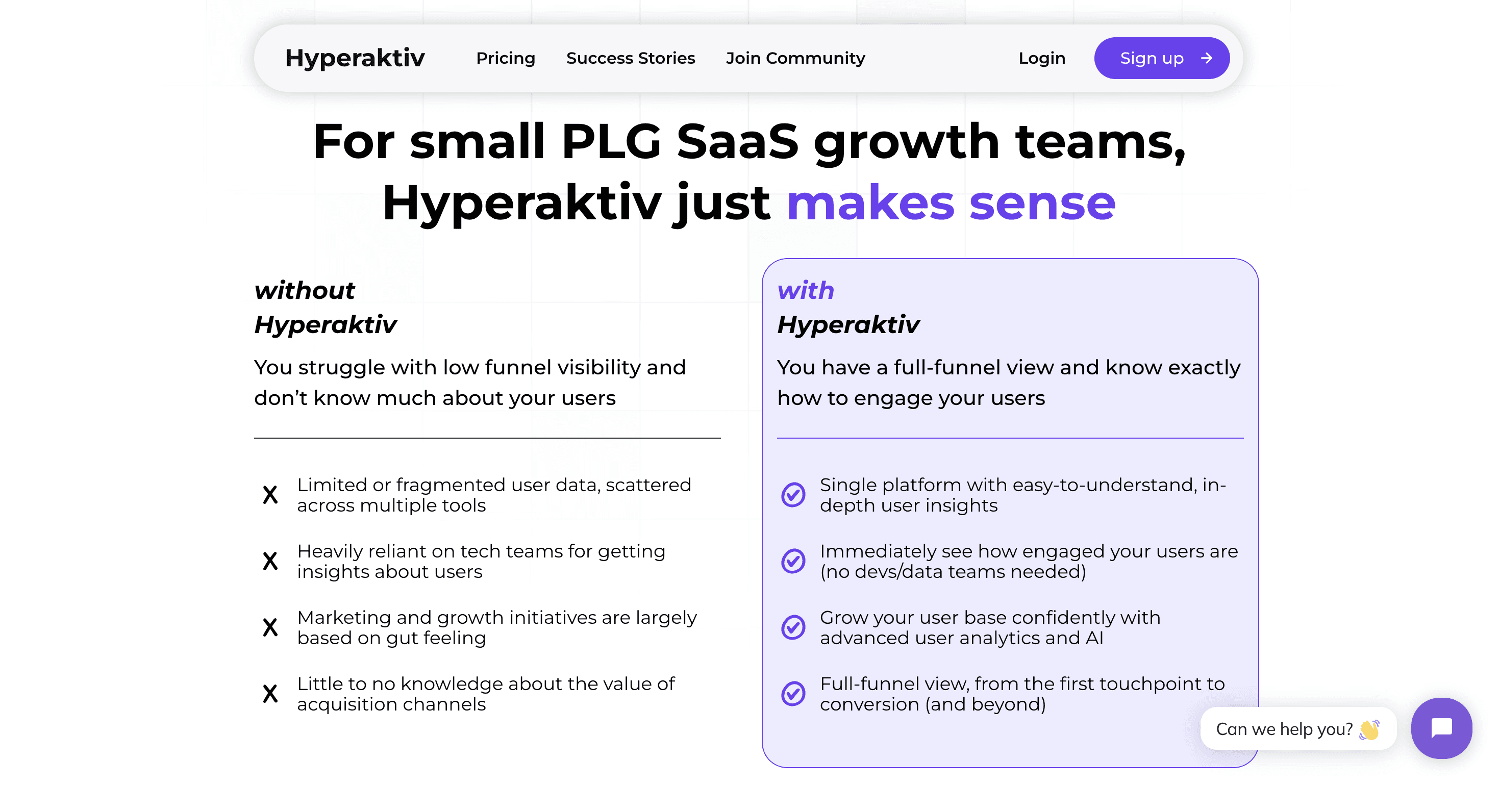
Key Features
Automatic Segmentation: Segments users by lifecycle stage, engagement level, and Ideal Customer Profile (ICP) match
User Profile Insights: Offers detailed user profiles through advanced data enrichment
Lifecycle Tracking: Shows exact time between each stage of the user lifecycle
Acquisition Channel Evaluation: Rates the effectiveness of various acquisition channels
Quick Setup: Designed to be ready to use in less than 10 minutes
Retention Analysis: Identifies converted users who have gone idle, flags churn risks, and provides a comprehensive timeline of each user's engagement over time
Pros
Rapid implementation and user-friendly interface
Holistic user journey tracking
Actionable insights with specific recommendations
Efficient acquisition channel evaluation
Unique segmentation capability: The only tool that allows you to segment users and see engagement and ICP match in each lifecycle stage
Cons
Limited chart-building capabilities
Focused primarily on PLG SaaS businesses, which may limit applicability for other industries
Pricing
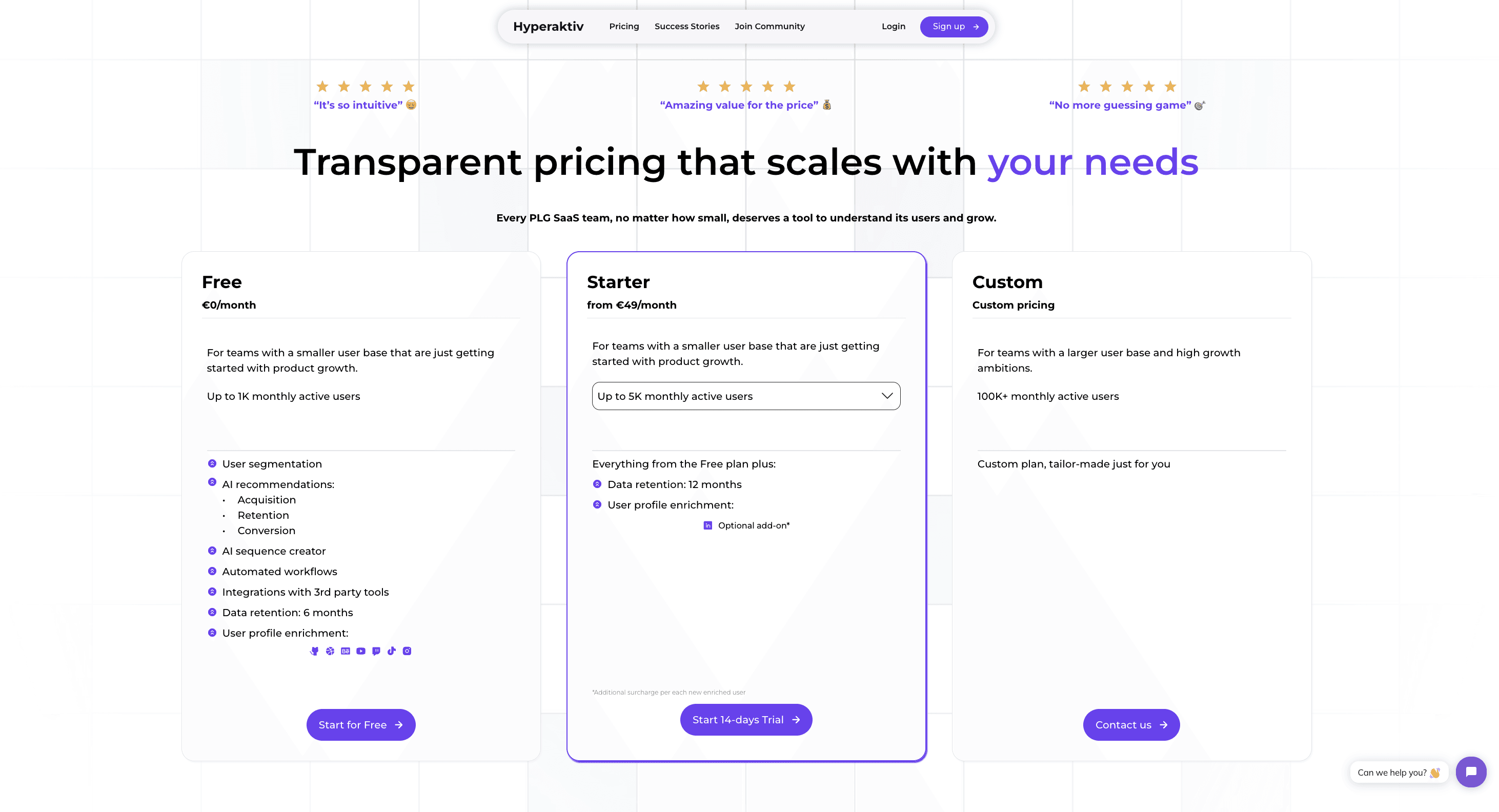
Free: €0/month (Up to 1K monthly active users)
Starter: From €49/month (Up to 5K monthly active users)
Ideal For
Small to medium-sized businesses seeking a straightforward, actionable approach to user analytics and customer segmentation.
Segment
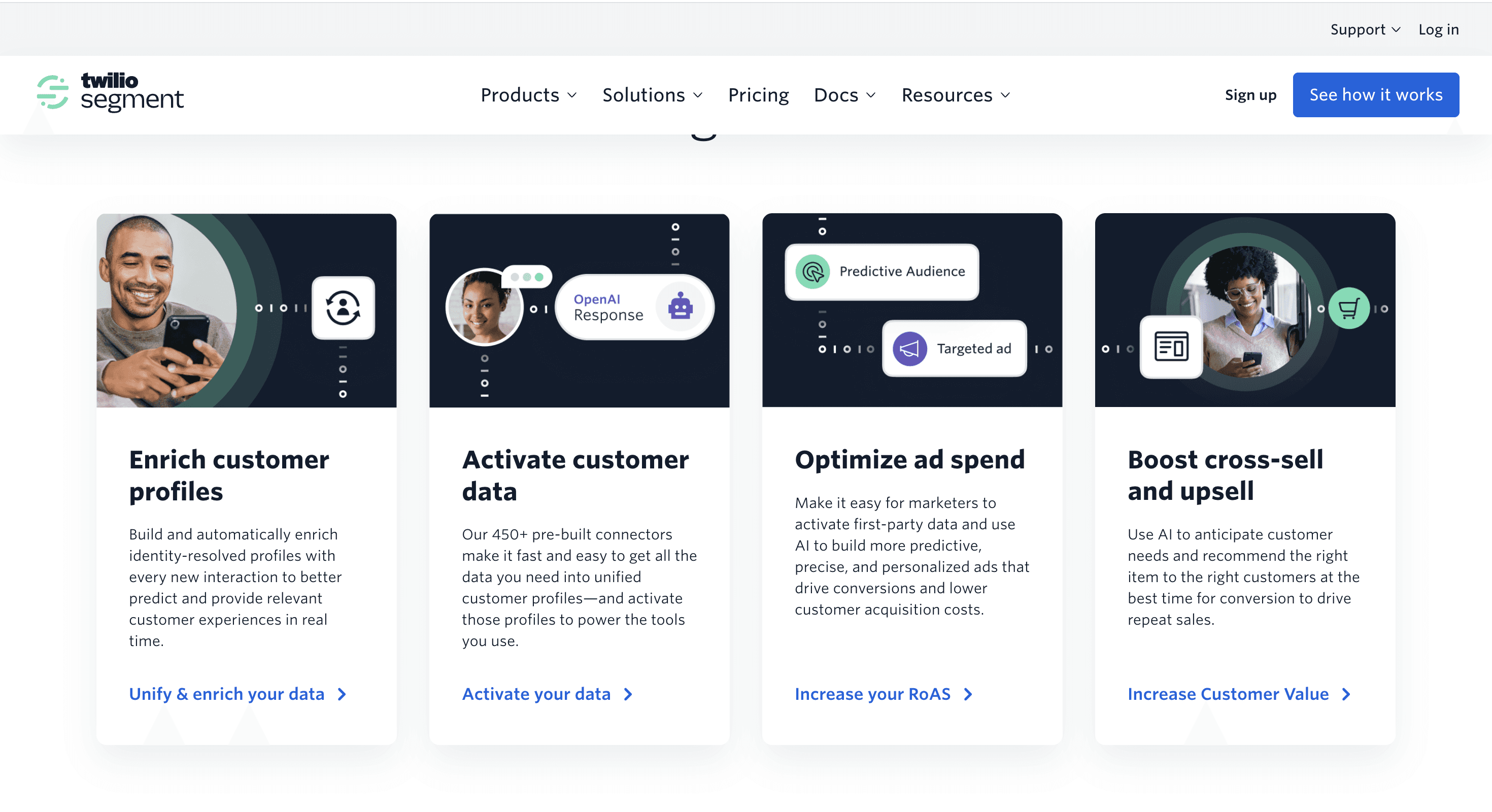
Segment, a Twilio company, is a powerful customer data platform designed to unify customer data from various sources and enable personalized communication.
Key Features
Dynamic Segmentation: Creates segments based on real-time customer data
Unified Customer Profiles: Gathers data from mobile and web apps, along with 300+ software integrations
Real-Time Audience Creation: Offered through the Twilio Engage product
Cross-Channel Segmentation: Tracks and segments customers across various channels and devices
Profiles Sync: Automatically syncs segmented customer profiles to your data warehouse
Pros
Mature infrastructure for event collection and segmentation
Extensive integration capabilities
Easily scalable for growing businesses
Enables personalized communication that resonates with specific segments
Cons
Creating exclusionary audiences can be challenging
Potential for high costs as user base grows
Complex setup process may require significant resources
Pricing
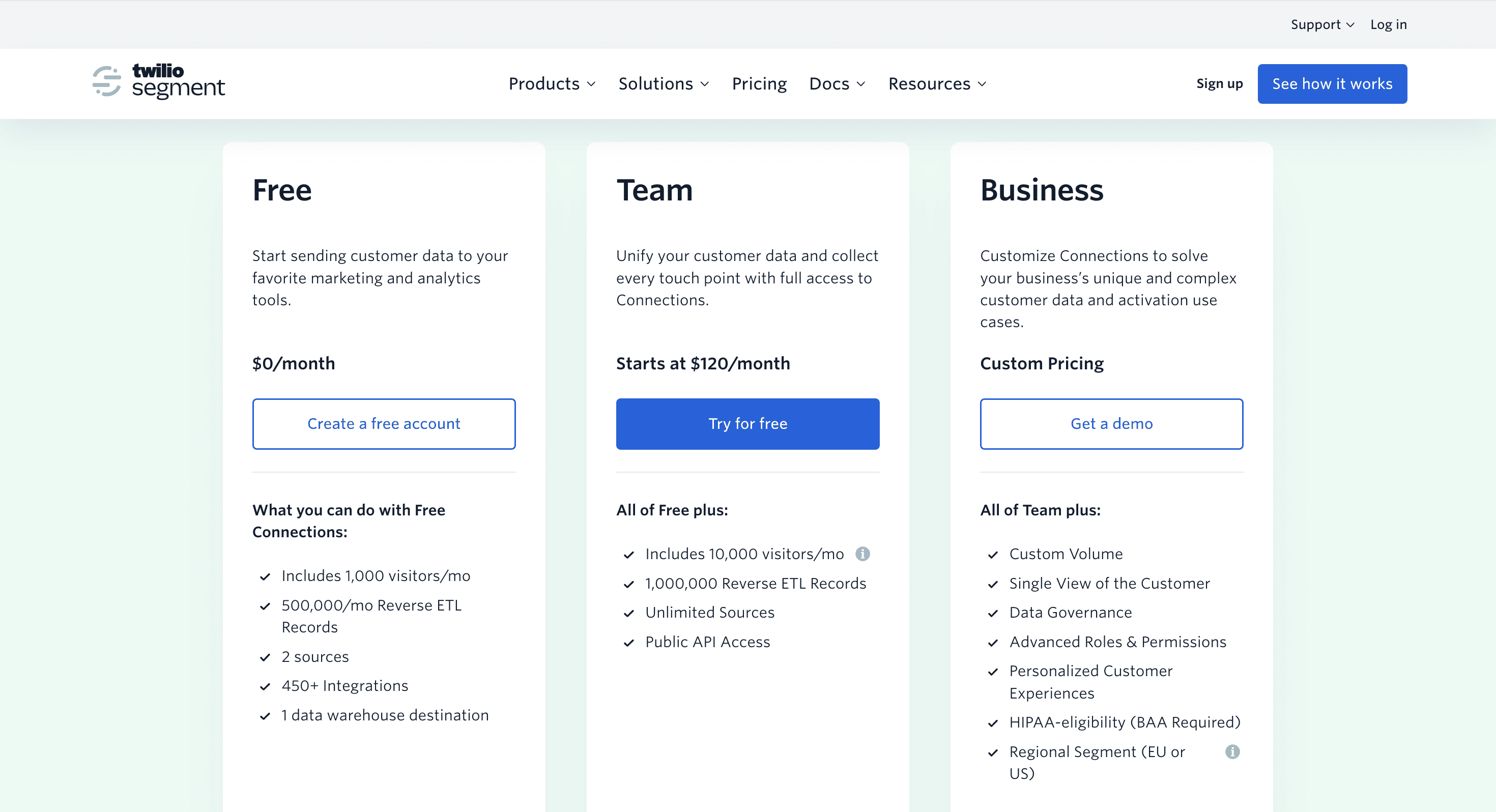
Free: Limited to 1,000 monthly tracked users (MTUs)
Team: Starts at $120/month for up to 10,000 MTUs
Business: Custom pricing for high-volume enterprises
Ideal For
Businesses of all sizes looking to elevate customer interactions through advanced segmentation, refine their marketing planning process, and boost conversion rates.
Userpilot
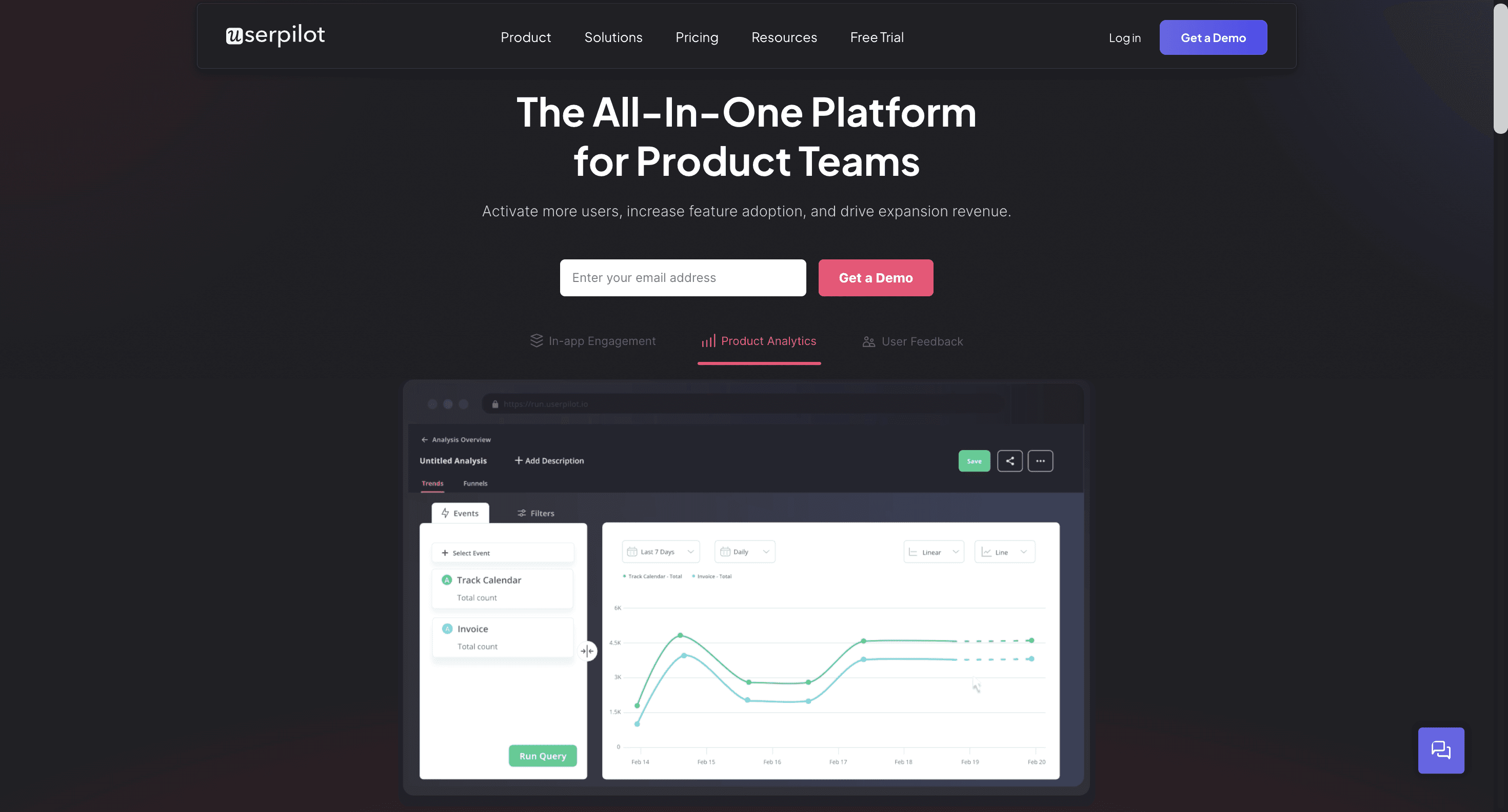
Userpilot is a product growth platform that specializes in user activation, feature adoption, and expansion revenue. Its core strength lies in its advanced segmentation capabilities, which are grounded in product usage analytics.
Key Features
Behavior-Based Segmentation: Create precise customer groups based on in-app behavior
Multi-Factor Segmentation: Segment users based on device type, location, engagement data, and survey responses
Advanced Analytics for Segmentation: Analyze product usage data and monitor engagement on in-app flows
Integration-Enhanced Segmentation: Leverage data from integrated tools for more in-depth segmentation
Segment-Specific Actions: Target specific segments with personalized onboarding experiences.
Pros
No-code builder for easy segment creation and targeting
Comprehensive event tracking for detailed behavioral segmentation
A/B testing capabilities to optimize experiences for different segments
Variety of UI patterns to engage different user segments
Cons
Potentially steep learning curve for advanced segmentation features
Limited customization options for some segmentation use cases
No mobile app support, limiting cross-platform segmentation
Pricing
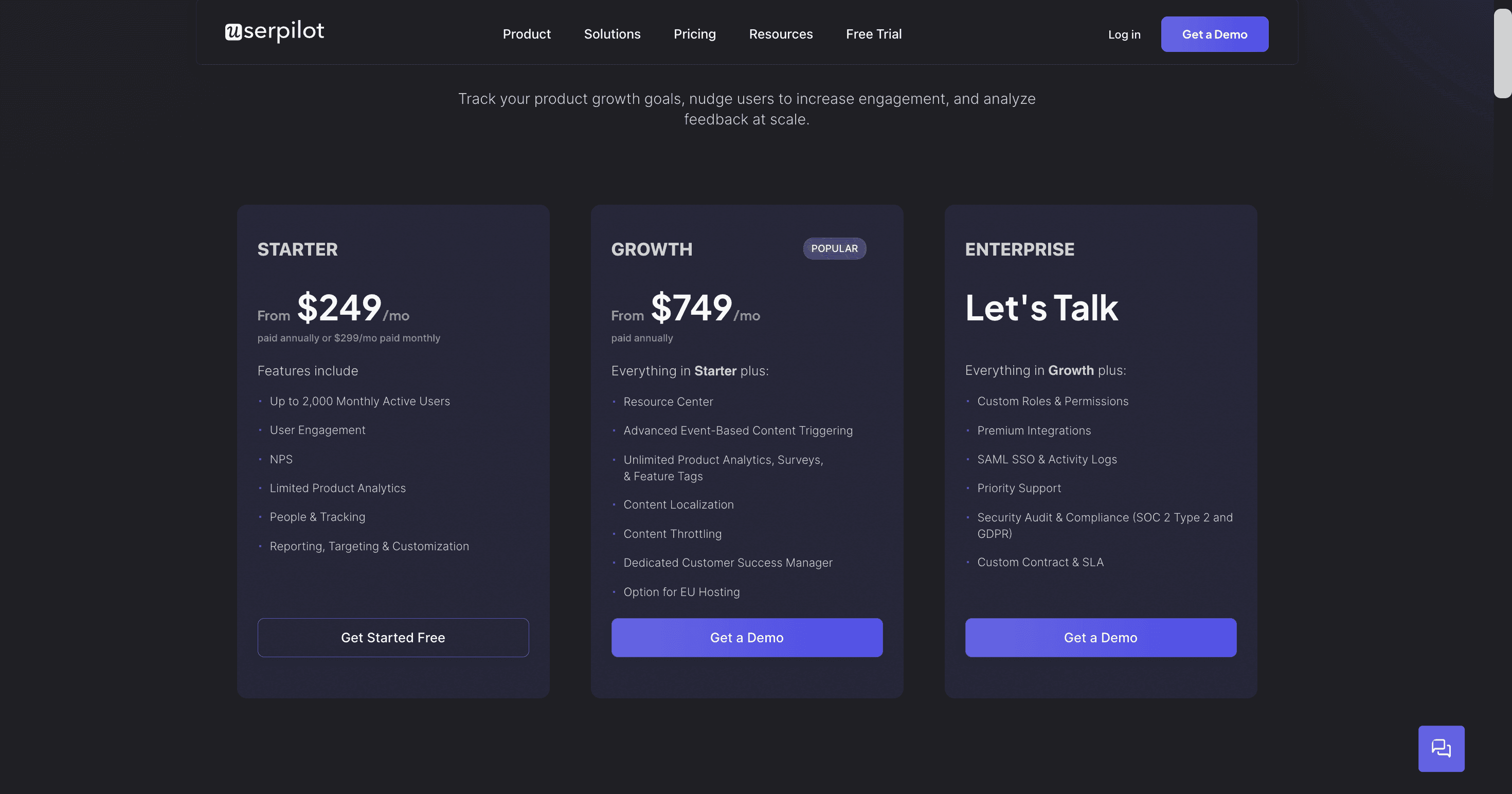
Starter: $249/month
Growth: $749/month
Enterprise: Custom pricing (Prices based on annual billing)
Ideal For
SaaS businesses looking to improve customer retention and activation through advanced user segmentation and targeted engagement strategies.
Baremetrics
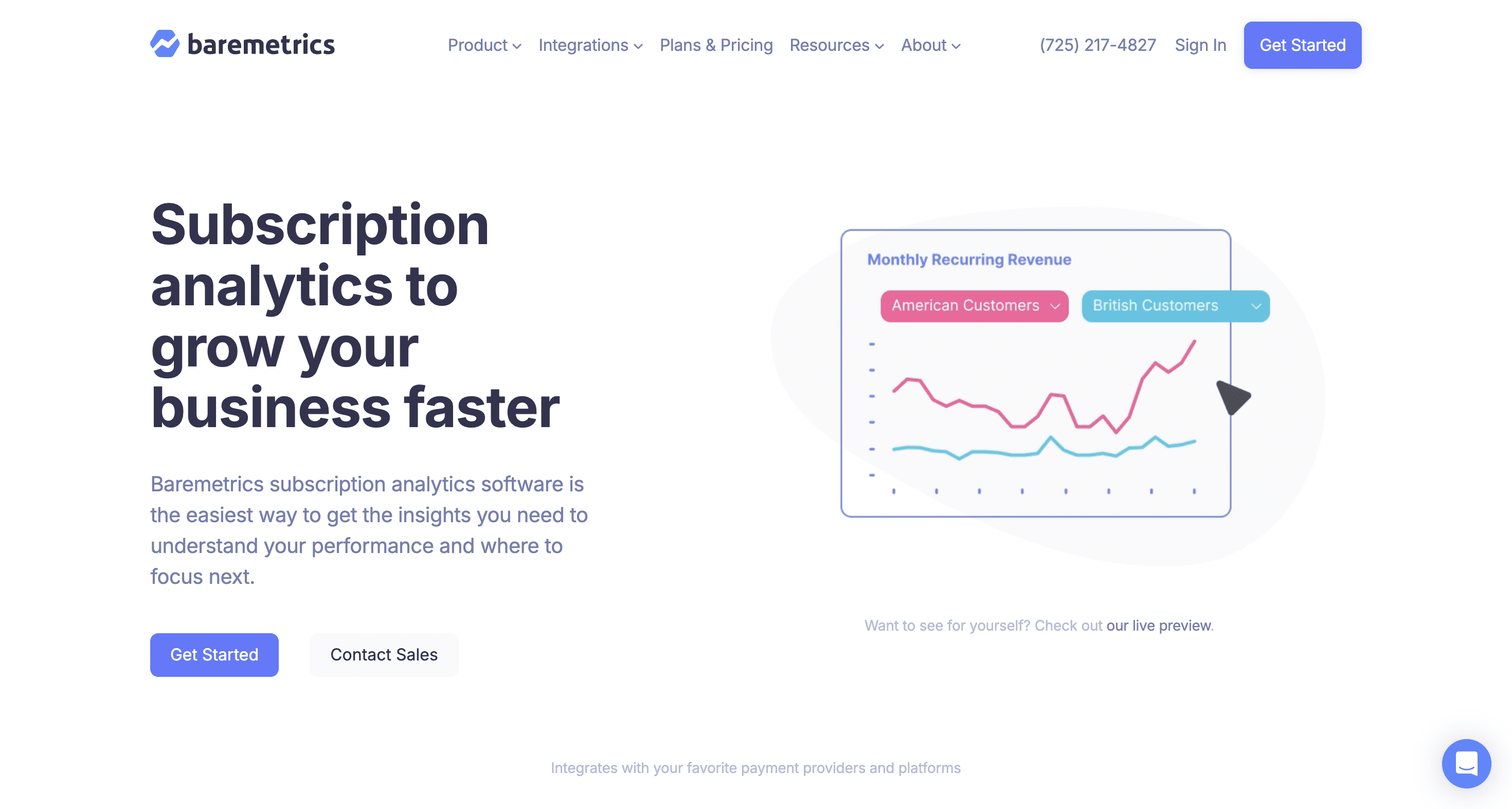
Baremetrics is a powerful analytics tool designed specifically for subscription-based businesses. While its primary focus is on subscription analytics, it offers robust customer segmentation features that can provide valuable insights for SaaS companies.
Key Features
Customer Segmentation: Create and save groupings of customers based on various criteria
Cohort Analysis: Analyze how different groups of customers behave over time
Churn Analysis: Track user churn, revenue churn, and net revenue churn
Trial Insights: Monitor customer behavior during trial periods
Revenue Analytics: Detailed analytics for subscription revenue, including MRR, ARR, and customer lifetime value
Pros
Specialized in subscription analytics, ideal for SaaS businesses
User-friendly interface with intuitive dashboards
Comprehensive revenue insights and churn analysis
Seamless integrations with popular payment platforms
Cons
Limited functionality for non-subscription-based businesses
Pricing may be steep for smaller businesses or startups
Not a full customer experience tool
Potential learning curve for those unfamiliar with financial analytics
Pricing
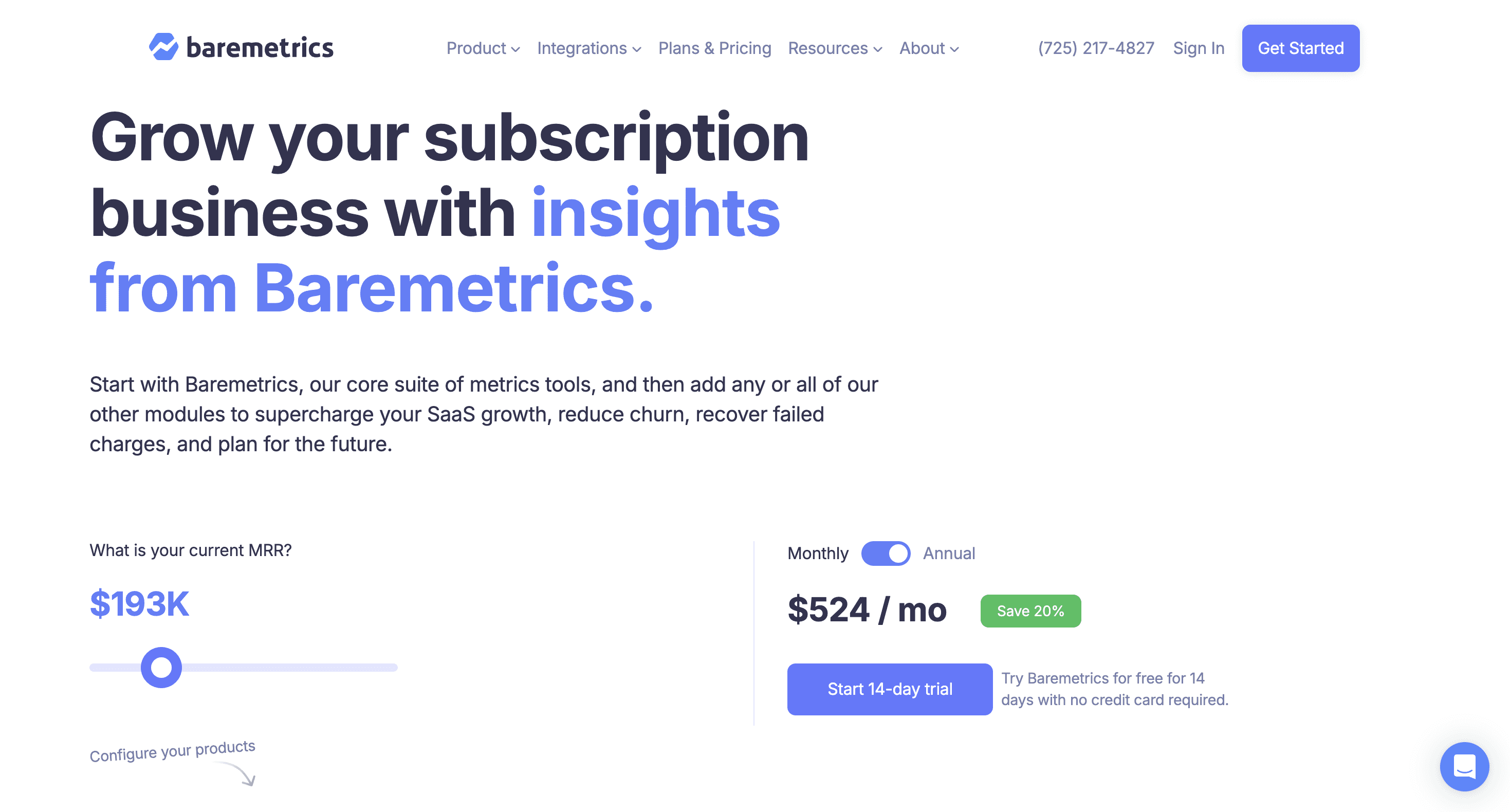
Pricing is based on your current Monthly Recurring Revenue (MRR)
Plans start at $129 per month for businesses with lower MRR
Higher-tier plans available with additional features for businesses with larger MRR
Ideal For
Subscription-based SaaS companies looking for deep insights into customer behavior, revenue patterns, and churn analysis, with a focus on using segmentation to drive business growth and improve retention.
Kissmetrics

Kissmetrics is a powerful analytics platform that focuses on person-based analytics, allowing businesses to track, analyze, and optimize the customer journey across multiple touchpoints and devices.
Key Features
Person-Based Analytics: Assigns a unique identifier to each user, persisting across sessions and devices
Cohort Analysis: Group users based on shared characteristics or behaviors
Funnel Analysis: Visualize the customer journey and identify drop-off points
Multi-Channel Attribution: Determine which marketing channels drive the most conversions and revenue
Customer Segmentation: Segment customers based on behavior, demographics, and product usage
Pros
Comprehensive view of customer behavior across multiple touchpoints
Ability to tie product analytics to marketing metrics
Geared towards small and medium-sized businesses (SMBs)
Clean, streamlined dashboard for easy data interpretation
Extensive resource and support center to shorten the learning curve
Cons
Pricing may be steep for some SMBs ($299/month billed annually)
No self-service option; demo request required
Limited customization options for report presentation
Pricing
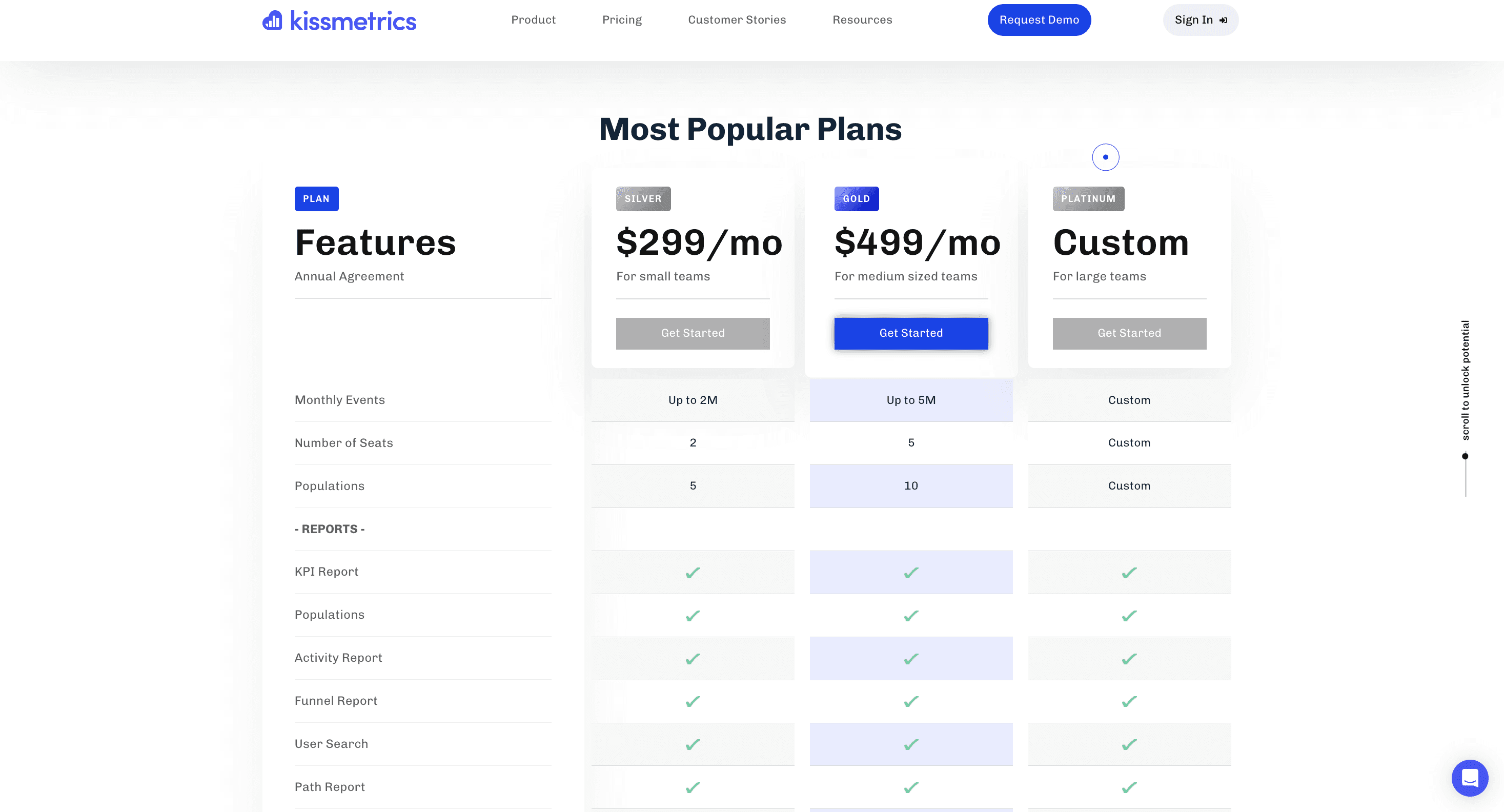
Starts at $299/month for small teams
Gold plan $499/month for medium sized teams
Ideal For
Small to medium-sized businesses looking for deep insights into customer behavior across multiple touchpoints, with a focus on tying product usage to marketing efforts and optimizing the customer journey.
Google Analytics
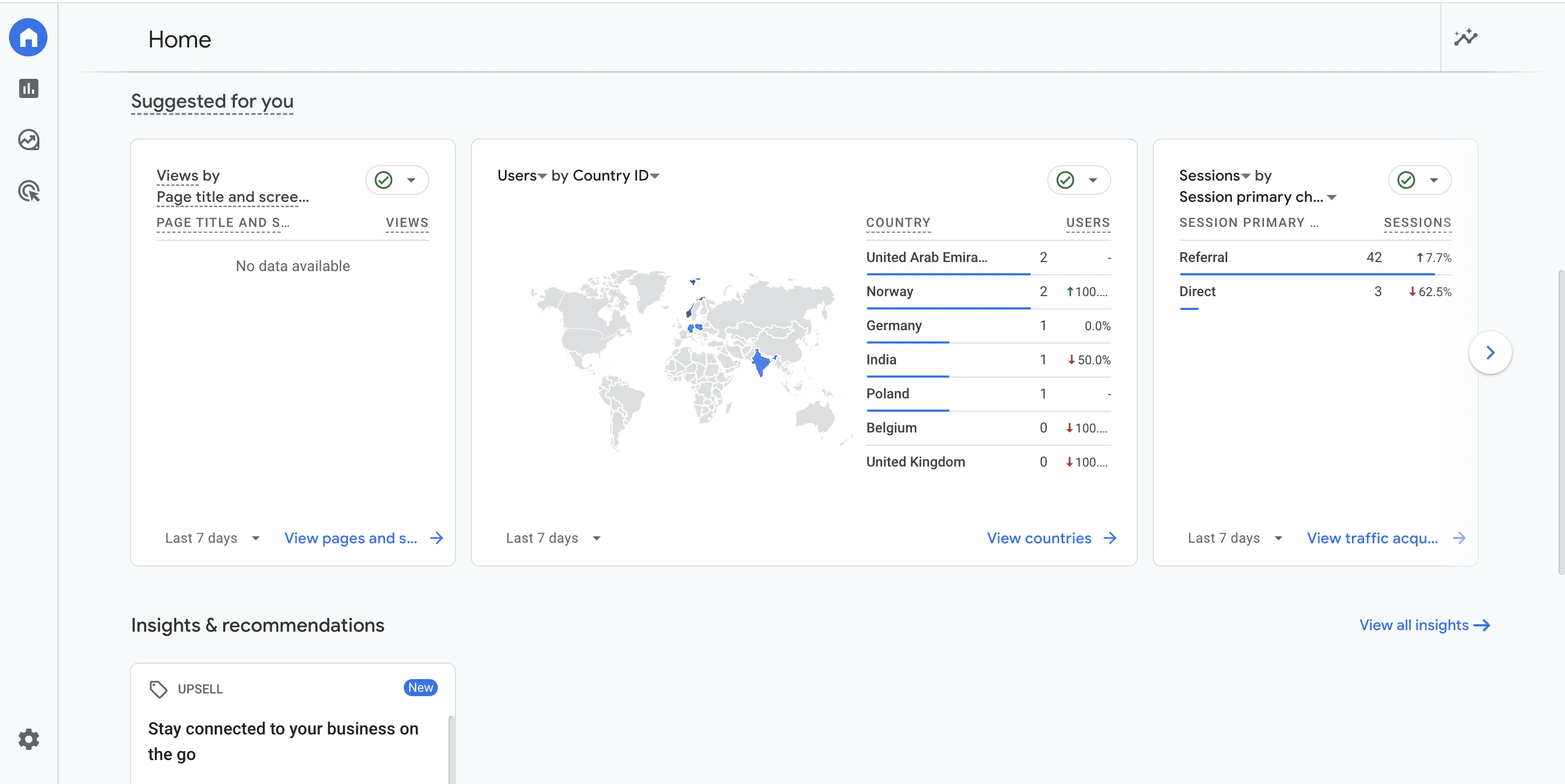
Google Analytics is one of the most popular and widely-used audience segmentation tools. It's a free platform that allows businesses to analyze a vast amount of customer data, primarily focused on website traffic and user behavior.
Key Features
User Segments: Analyze user characteristics and behavior across all sessions
Session Segments: Focus on individual session data
Event Segments: Drill down to specific user interactions or "events"
Technology-Based Segmentation: Segment users by their web and mobile technologies
Event-Based Cohorts: Assign events on the website and form cohorts based on accomplished events
Pros
Extensive segmentation capabilities for website traffic data
Backed by valuable Google data
User-friendly interface with the User Explorer menu for easy segmentation
Completely free to use
Widely adopted, with extensive community support and resources
Cons
Limited functionality for in-app event analytics
Primarily focused on website data, may not be comprehensive for multi-channel businesses
Learning curve can be steep for advanced segmentation features
Pricing
Free
Ideal For
Businesses of all sizes looking for a robust, free tool to segment and analyze their website traffic and user behavior. Particularly useful for those new to customer segmentation who want to explore its benefits and uses before investing in paid solutions.
Heap

Heap is a robust product analytics platform that provides in-depth insights into customer behavior across all touchpoints within a product. It stands out for its automated data capture and retroactive analysis capabilities.
Key Features
Automated Data Capture: Autocapture feature tracks user actions without manual setup
User Segmentation: Segment users based on actions, behaviors, and properties
Cohort Analysis: Divide users into cohorts based on shared attributes and behaviors
Path Analysis: Session Replays, Heatmaps, and Journeys charts for comprehensive path analysis
Funnel Analysis: Define and track conversion funnels with custom events
Real-time Insights: Live data feed provides real-time view of all Heap events
Pros
Automated data capture reduces setup time and technical requirements
Retroactive analysis allows for flexible exploration of historical data
Comprehensive analytics suite including heatmaps and session replays
Supports both web and mobile applications
Extensive integrations with over 100 platforms
Cons
Steep learning curve due to the vast array of features
High data storage requirements can lead to increased costs
Lacks an engagement layer for acting on insights directly
Limited segmentation criteria compared to some specialized tools
Pricing
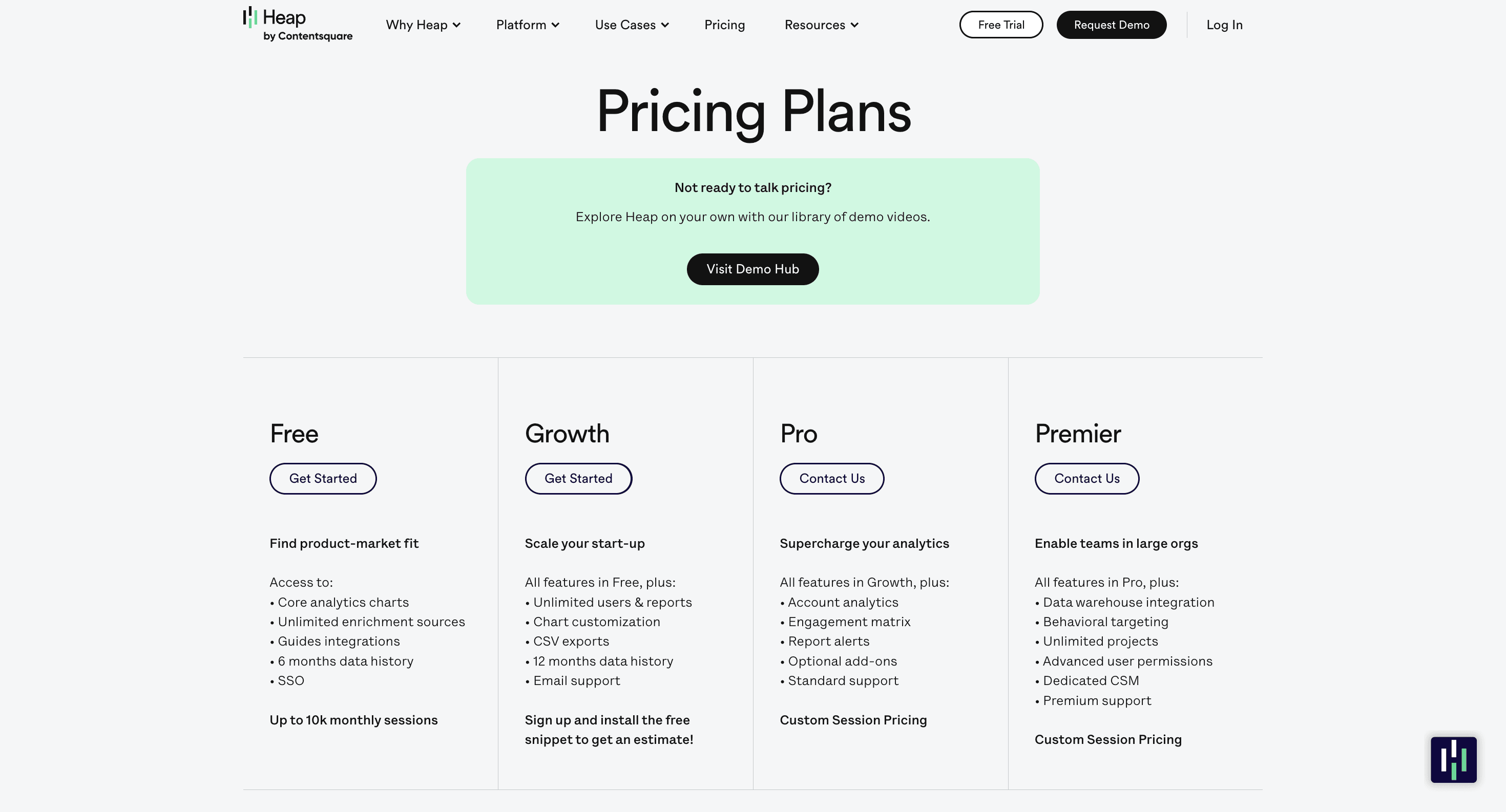
Pricing not provided. Typically, Heap offers custom pricing based on the scale of data and features required.
Ideal For
Medium to large businesses looking for a comprehensive product analytics platform with powerful automated data capture and segmentation capabilities. Particularly useful for teams wanting to perform in-depth cohort analysis and user journey optimization.
Conclusion
Choosing the right customer segmentation tool depends on your specific business needs, budget, and technical capabilities. Each of the tools we've reviewed offers unique strengths:
Hyperaktiv delivers quick, actionable insights for small to medium SaaS businesses. It excels in providing tailored recommendations for each customer lifecycle stage
Segment offers powerful data integration and real-time segmentation
Userpilot specializes in product growth and user activation
Baremetrics is ideal for subscription-based businesses
Kissmetrics provides deep, person-based analytics
Google Analytics offers robust, free website analytics
Heap stands out with its automated data capture and retroactive analysis
Consider your primary segmentation needs, the size of your business, and your budget when making your choice. Remember, the best tool is the one that aligns with your specific business goals and helps you understand and serve your customers better.





